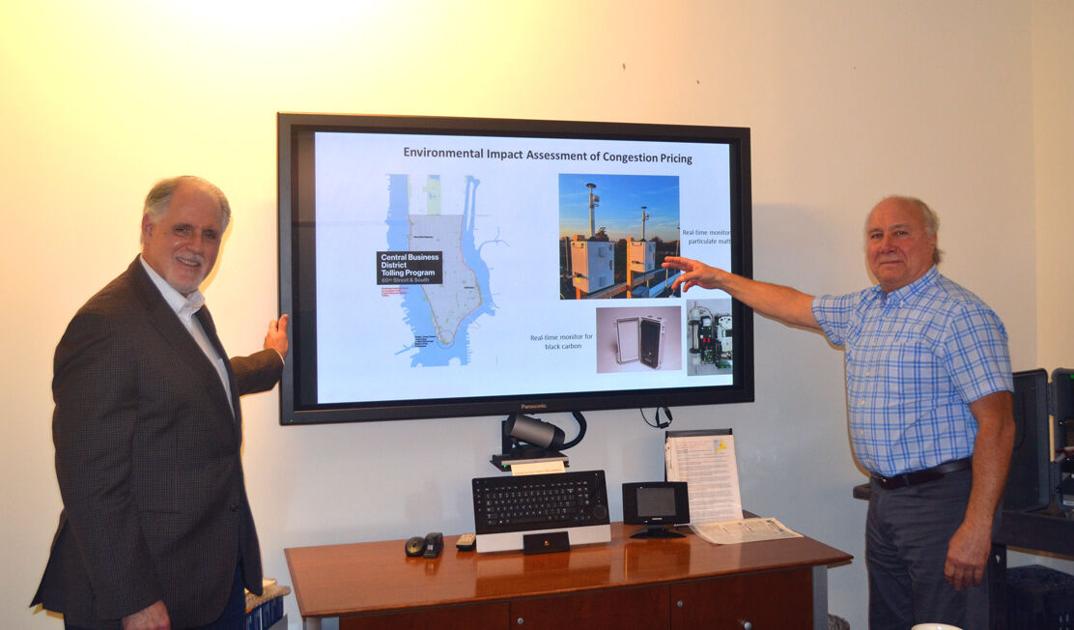
Councilman Jim Gennaro (D-Hillcrest) returned to his old stomping grounds at Queens College last Friday afternoon as he visited the school’s Barry Commoner Center for Health and the Environment.
During his visit — to which the Chronicle was exclusively invited — the Council Committee on Environmental Protection, Resiliency and Waterfronts chair got a closer look at the research being conducted at the center.
Professor Holger Eisl and researcher Nalyn Siripanichgon led Gennaro’s tour, leading off with a presentation of their work, which focuses on measuring the amount of certain pollutants in the air throughout the five boroughs.
Since 2007, Eisl explained, the center has sought to gain a better understanding of neighborhood-level air quality in New York City, as opposed to ambient air, which is much higher in the atmosphere. But some were skeptical at first — including the state Department of Environmental Conservation.
“The DEC was very critical of the study,” Eisl said. “They said, ‘It’s impossible to do, you cannot do it,’ for a variety of reasons, one of the things being, there was no instrument that can do this kind of work.”
So Eisl and his peers developed one. The device is about the size of a small briefcase, but has a hard shell case with measuring equipment inside. Now, the center has 90 instruments throughout the city, measuring the amount of particulate matter, nitrogen dioxide, nitric oxide and sulfur dioxide. Though the devices are not certified by the Environmental Protection Agency, they use instruments that serve (which did not exist in 2007) as a baseline to make sure the measurements are accurate.
The Commoner Center has also developed 15 devices that can produce those measurements in real time. To see the air quality measurements at the site closest to your home, visit tinyurl.com/2dkanps2.
From the time Queens College began its study in 2009 until its 2021 conclusion, the Commoner Center found that the city’s levels of particulate matter, nitrogen dioxide, nitric oxide and sulfur dioxide decreased by 40, 38, 58 and 97 percent, respectively.
Gennaro reasoned that sulfur dioxide concentration declined so dramatically due to the city’s phasing out of boilers using No. 6 fuel, which were found mainly in large residential buildings. He said the city is on track to meet the 2030 goal for their total disappearance, as only about 1,200 buildings still have them.
Now, Eisl, Siripanichgon and their colleagues are working with the Department of Health and Mental Hygiene to do an environmental assessment for congestion pricing, the policy that will charge drivers coming into Downtown and Midtown Manhattan in hopes of tamping down traffic and the air pollution that comes with it. They will pay specific attention to six “environmental justice corridors” with major roads, such as the portion of the Brooklyn-Queens Expressway that goes through Maspeth.
But having seen congestion pricing take effect in cities like London and Stockholm, Eisl said he does not think the policy will have much of an impact on the city’s air quality. In Stockholm, he said, there was initially a large reduction in traffic, but eventually, people just adjusted their budgets accordingly.
